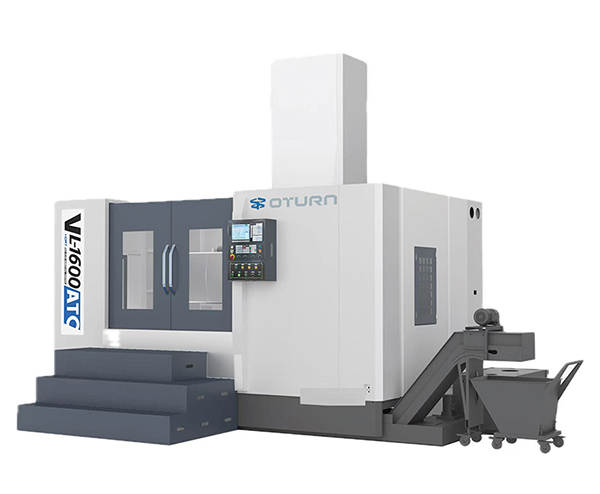High-rigidity CNC vertical lathes are high-precision, high-efficiency machine tools featuring strong rigidity support, suitable for machining various complex and high-precision workpieces. Their spindles use high-precision bearings, offering high speed and stability. The bed is designed for smooth chip removal and low failure rates. These machines can perform automated machining and multiple processes in one setup, greatly improving efficiency and yield.
Correct operation of high-rigidity CNC vertical lathe is essential. Below are the proper usage steps:
Step 1: Equipment Preparation
1.Ensure the work area is clean and free of obstacles.
2.Inspect all components to confirm they are in good working condition, paying special attention to the spindle, turret, and turning tools.
Step 2: Program Writing
1.Write the machining program based on the workpiece requirements and process. Programs typically consist of G-codes (for tool paths and speeds) and M-codes (for machine functions).
2.Carefully consider tool selection, feed rates, and turning depths to ensure safety and quality.
Step 3: Equipment Setup
1.Mount the workpiece securely on the table using clamps or fixtures.
2.Adjust parameters such as tool position, machining speed, and feed rate according to the program.
3.Verify all components are correctly installed and adjusted to ensure machining accuracy and stability.
Step 4: Start the Machine
1.Power on the CNC machine and follow the user manual to operate and start.
2.Monitor normal operation during startup, including spindle rotation and feed system. Stop and inspect if abnormalities occur.
Step 5: Monitor Machining Process
1.Closely observe machine status and machining quality to ensure efficiency and precision.
2.Regularly check tool wear and replace or repair as needed.
3.Stop the machine immediately if any issues arise and troubleshoot.
Step 6: Finish and Maintenance
1.After machining, power off the machine and perform cleaning and maintenance.
2.Clean the machining area, remove chips and debris safely.
3.Perform regular maintenance to keep the machine in good condition.
Following these steps will help ensure your high-rigidity CNC vertical lathe runs efficiently and accurately in industrial production. Always refer to the equipment manual and safety guidelines for safe and quality operation.
If you have any questions or need support, please contact us. OTURN has a professional technical team and complete service system to provide you with the support and solutions needed for stable, efficient production and improved competitiveness.
FAQ
Q1: What materials can be machined on high-rigidity CNC vertical lathes?
A1: These machines can process a wide range of materials, including cast iron, steel, alloys, non-ferrous metals, and non-metallic materials, making them versatile for various industrial applications.
Q2: How does the spindle design affect machining performance?
A2: The spindle’s high-precision bearings and robust design enable high-speed rotation with minimal vibration, improving surface finish and extending tool life.
Q3: Why is chip removal important in vertical lathes?
A3: Efficient chip removal prevents chip accumulation, which can cause tool damage, surface defects, and machine downtime. The vertical lathe’s bed design facilitates smooth chip flow, enhancing productivity.
Q4: Can these machines handle large, heavy workpieces?
A4: Yes, the vertical orientation allows the workpiece to be clamped by gravity, providing excellent stability for heavy and large-diameter parts.
Q5: What safety precautions should operators take?
A5: Operators should ensure the work area is clean, wear appropriate personal protective equipment, follow the machine’s operating manual, and monitor the machining process closely to respond quickly to any abnormalities.
Post time: May-08-2025








